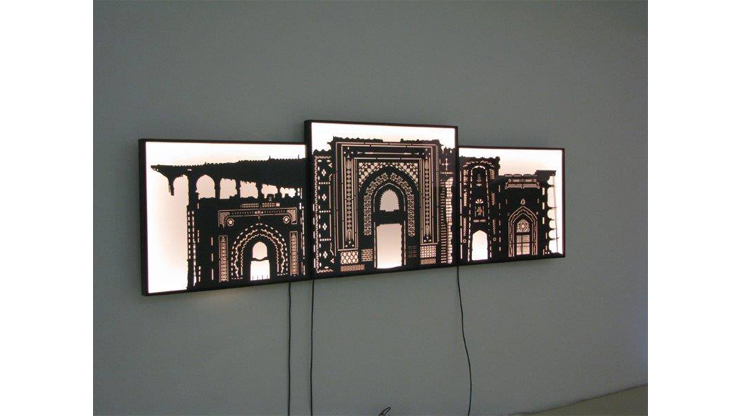Nir Adoni | Other People’s Problems
Curators: Doreet Levitte Harten, Dalia Levin
Sep. 7, 2013 - Dec. 14, 2013
Born in Israel in 1980, lives and works in Tel Aviv
Cathedral, 2010, laser-cut metal, LED
Untitled, laser-cut metal, LED
Sha’arot, 2013, laser-cut cardboard, LED
The laser-cutting technique employed by Nir Adoni enables him to create elegant, streamlined structures composed of different materials. The hybrid aesthetic of these structures is based on a combination of various sources, while evoking a range of states and events.
